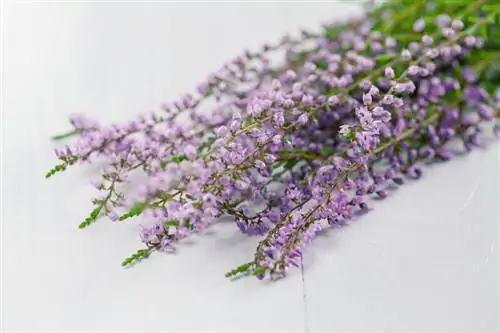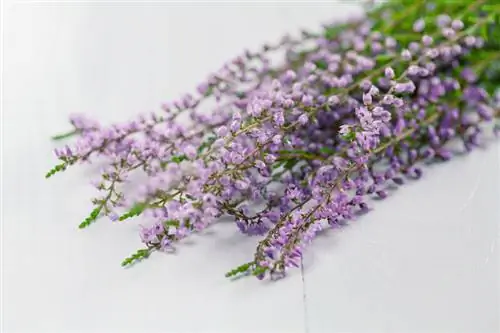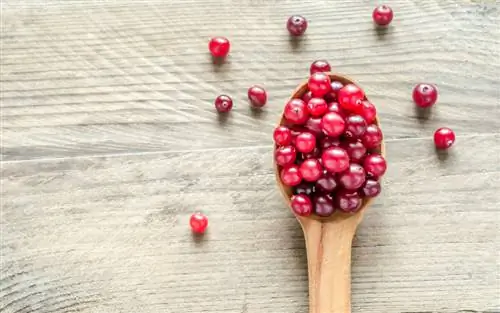- Author admin [email protected].
- Public 2023-12-16 16:46.
- Last modified 2025-01-23 11:20.
Heather, in this case primarily the species known as common heather (Calluna vulgaris), has been used in folk medicine for centuries as a medicinal plant used both internally and externally. Other heather species, such as Erica arborea, the tree heather, can also be used for medicinal purposes.

What effects does heather have on he alth?
The heather effect includes antiseptic, anti-inflammatory, urinary and diaphoretic, expectorant, blood purifying and calming properties. It is used for respiratory diseases, urinary tract infections, gout, rheumatism, eczema and skin rashes.
Ingredients and plant components used
Between August and September you can harvest the tender shoot tips, leaves and flowers of common heather. The flowers, which are very rich in sugar, not only serve as heather for bees (the dark, very aromatic heather honey is considered a speci alty of the Lüneburg Heath), but can also be used for infusions. The medicinal plant contains tannins and minerals, various enzymes, various minerals as well as saponins and flavon glycosides, as well as hydroquinone and arbutin.
Healing effect when used internally and externally
Both the flowers and the herb can be used to prepare an infusion that can be used internally for infections of the urinary tract, bladder and kidneys, for gout, rheumatism and for diseases of the respiratory tract (especially for coughs and strong coughs). Mucilage) is applied. When applied externally, heather tea is said to help against eczema, skin rashes and skin redness. The following effects are attributed to common heather in particular:
- antiseptic (germ-killing), disinfectant and anti-inflammatory
- urinary and sweaty
- expectorant
- blood purifying
- calming
Recipe: Heather infusion
The classic, very versatile heather tea is made as follows:
- Pour 250 milliliters of hot water over a tablespoon of the flowers and/or herb.
- Let the brew steep for about five to ten minutes.
- Pour out the solid ingredients through a sieve.
- Drink one to three cups daily or
- use the infusion for compresses and rinsing (e.g. wounds).
If you like it sweeter, you can also sweeten the infusion with a teaspoon of honey.
Tip
You can also use the heather flowers and the infusion for a full bath, which is traditionally recommended against rheumatism and gout.






